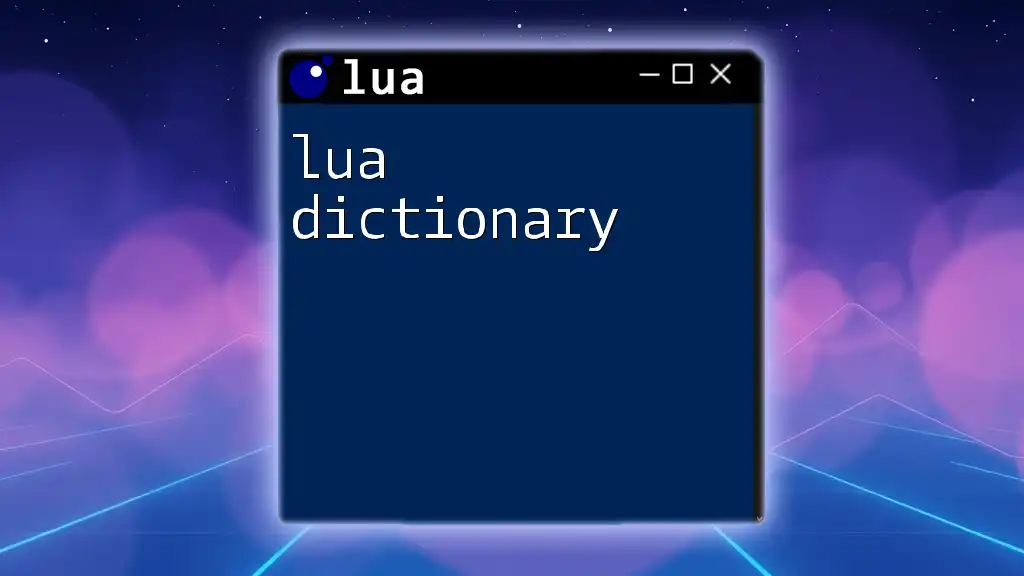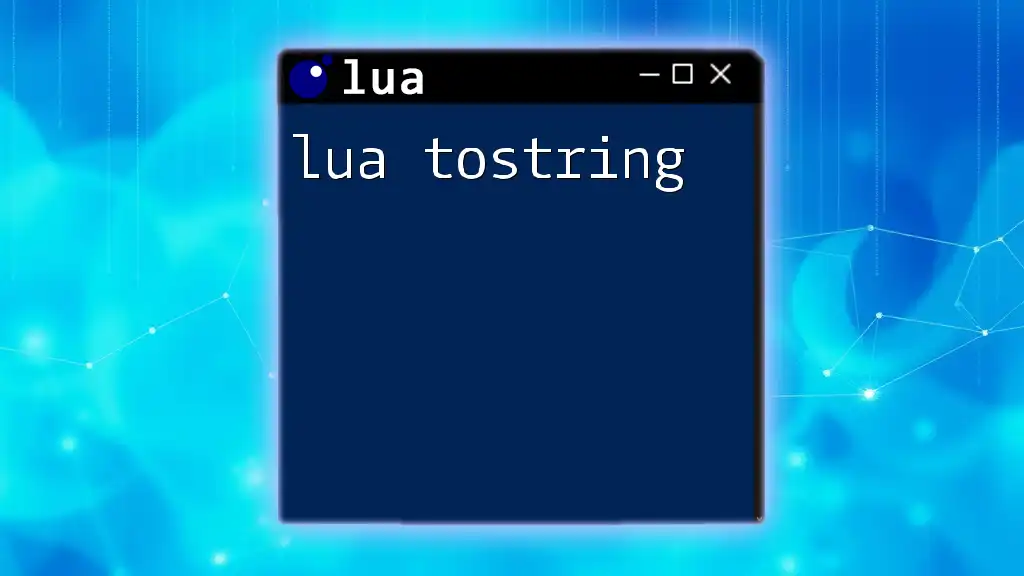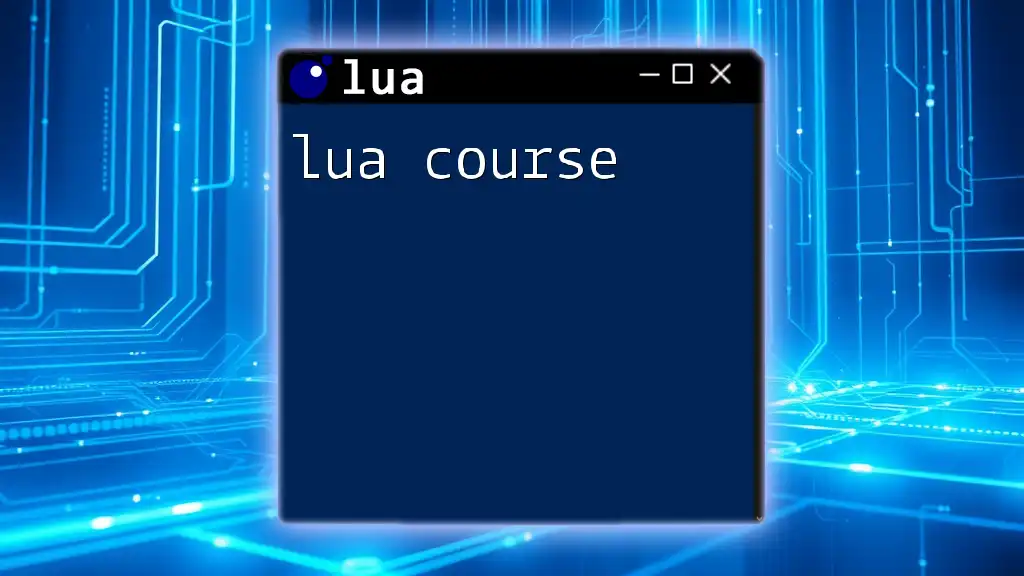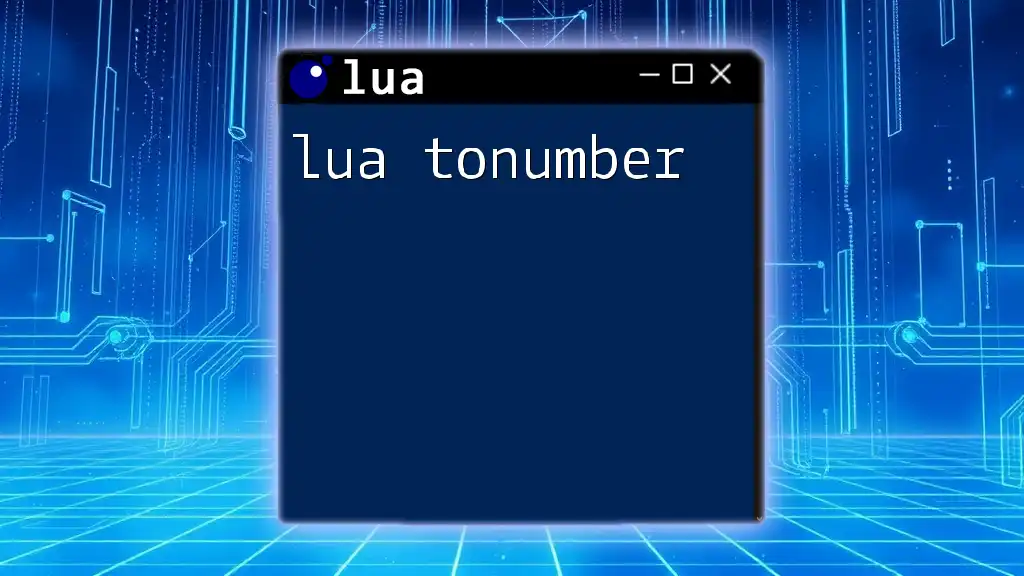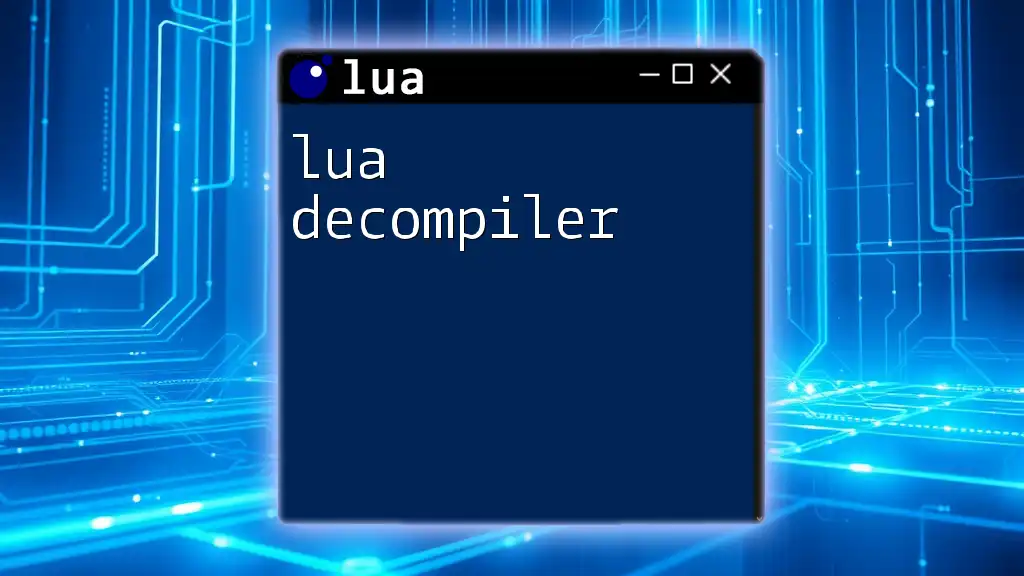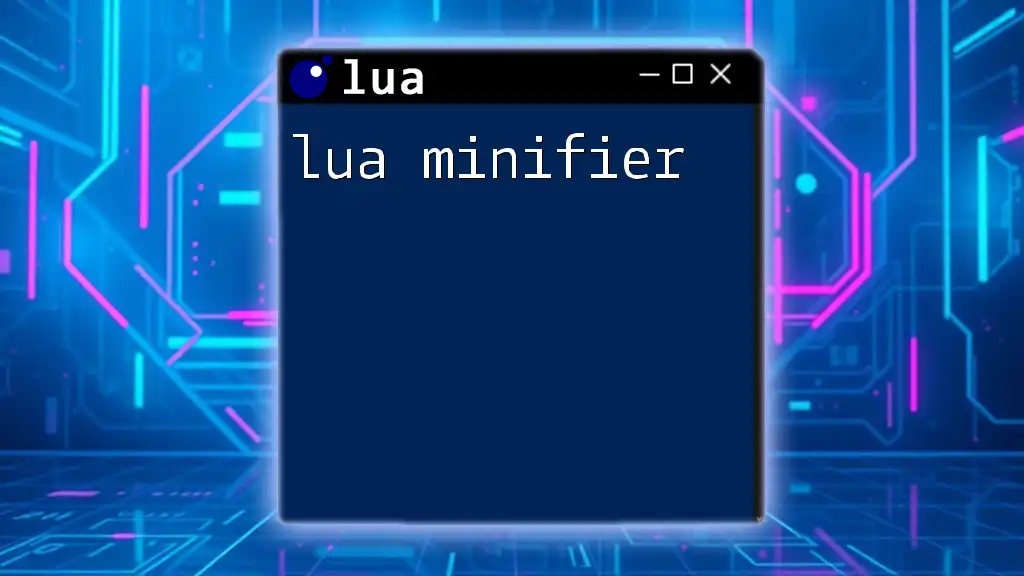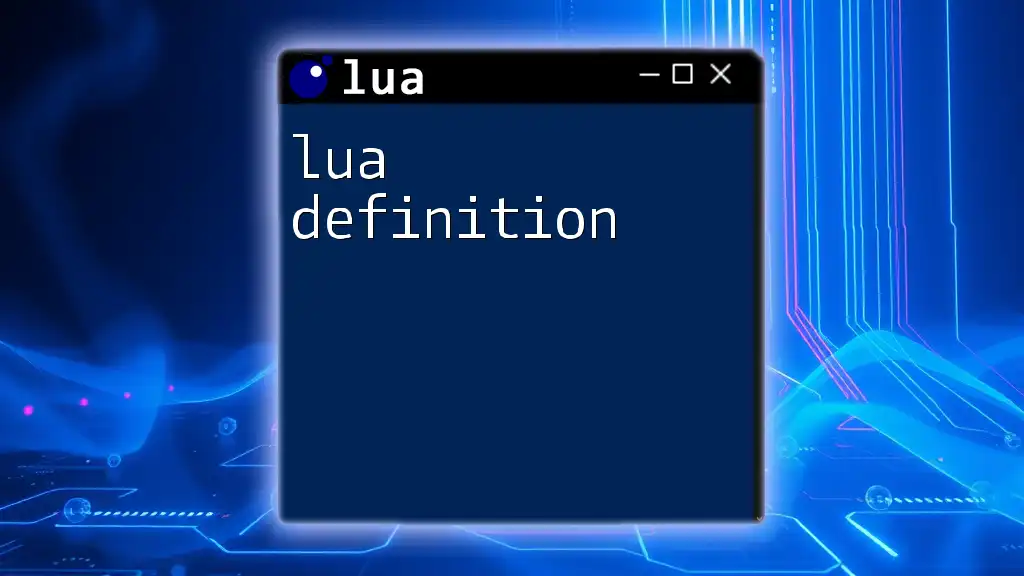A Lua dictionary, often referred to as a table, is a data structure that allows you to store key-value pairs for efficient data retrieval and manipulation.
Here's a code snippet demonstrating how to create and access a Lua dictionary:
-- Creating a Lua dictionary
local myDictionary = {
["name"] = "John",
["age"] = 30,
["city"] = "New York"
}
-- Accessing values from the dictionary
print(myDictionary["name"]) -- Output: John
print(myDictionary["age"]) -- Output: 30
print(myDictionary["city"]) -- Output: New York
Understanding Lua Tables
What is a Lua Table?
In Lua, a table is the primary data structure that acts as both an array and a dictionary. Unlike other programming languages that have distinct structures for different data types, tables in Lua seamlessly combine the functionality of arrays and dictionaries. They are incredibly versatile and can store a wide range of values, including numbers, strings, functions, and even other tables.
Key Characteristics of Lua Tables
Lua tables possess several key characteristics:
- They are dynamically typed, meaning you don’t need to define a table's structure ahead of time.
- Tables in Lua are always indexed with keys, where each key is associated with a value. This allows for easy retrieval and management of data.
- Their performance is generally efficient, but it is essential to understand how to use them effectively, especially as the size of the data grows.
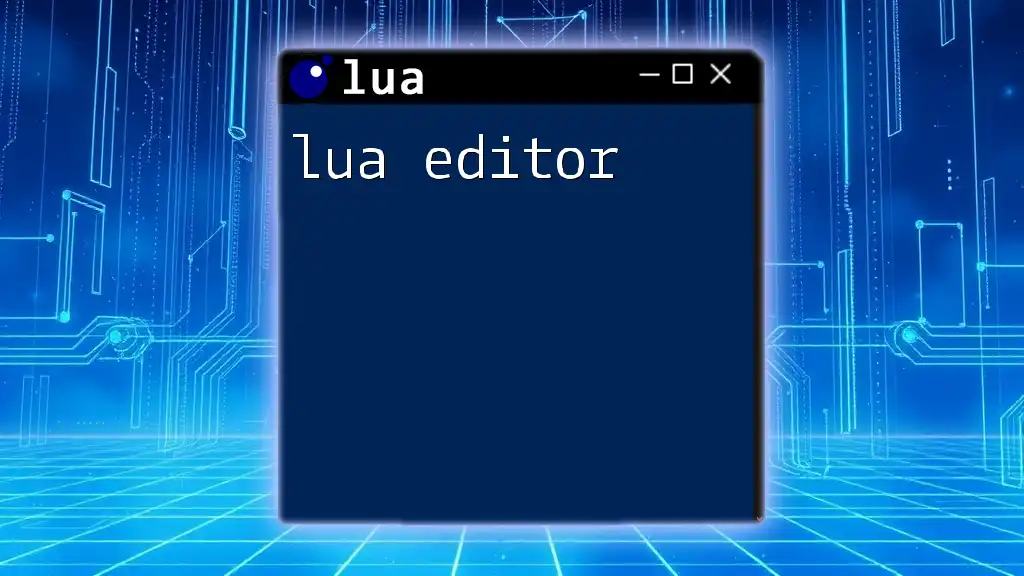
Creating a Dictionary in Lua
Basic Syntax of Lua Tables
To create a table in Lua, the syntax is straightforward. You can initialize an empty table as follows:
myTable = {} -- Creating an empty table
This line sets the variable `myTable` to an empty table, which is the first step in building your Lua dictionary.
Adding Key-Value Pairs
Once you have your table, you can add key-value pairs. In Lua, you can define the keys as strings (or numbers) and assign them corresponding values:
myTable["key1"] = "value1"
myTable["key2"] = "value2"
In this code snippet, you define two keys `key1` and `key2` with values `value1` and `value2`, respectively. This method allows you to effectively store data in a map-like structure.
Accessing Values
Accessing values from the table is intuitive. Use the key within brackets to retrieve the corresponding value:
print(myTable["key1"]) -- Output: value1
This line will print the value associated with `key1`, showcasing how simple it is to access dictionary values in Lua.

Common Operations with Lua Dictionaries
Updating Values in a Dictionary
Updating existing values in your Lua dictionary is just as straightforward. To change the value associated with a given key, simply reassign it:
myTable["key1"] = "newValue"
This includes the ease of modifying data without needing to remove and reinsert values, which can streamline your code.
Removing Key-Value Pairs
To remove an entry from your dictionary, you set its key to `nil`. This operation effectively deletes the key-value pair:
myTable["key2"] = nil -- Removes key2 from the dictionary
This method of deletion is efficient and clean, allowing for easy management of your table's contents.
Iterating Through Key-Value Pairs
One of the useful aspects of Lua dictionaries is the ability to iterate through key-value pairs. You can achieve this using the `pairs()` function:
for key, value in pairs(myTable) do
print(key, value)
end
This loop will print all keys and their associated values in your table. It’s important to note the difference between `pairs()` and `ipairs()`: while `pairs()` iterates over all entries, `ipairs()` is used for arrays and iterates only over the integer keys.
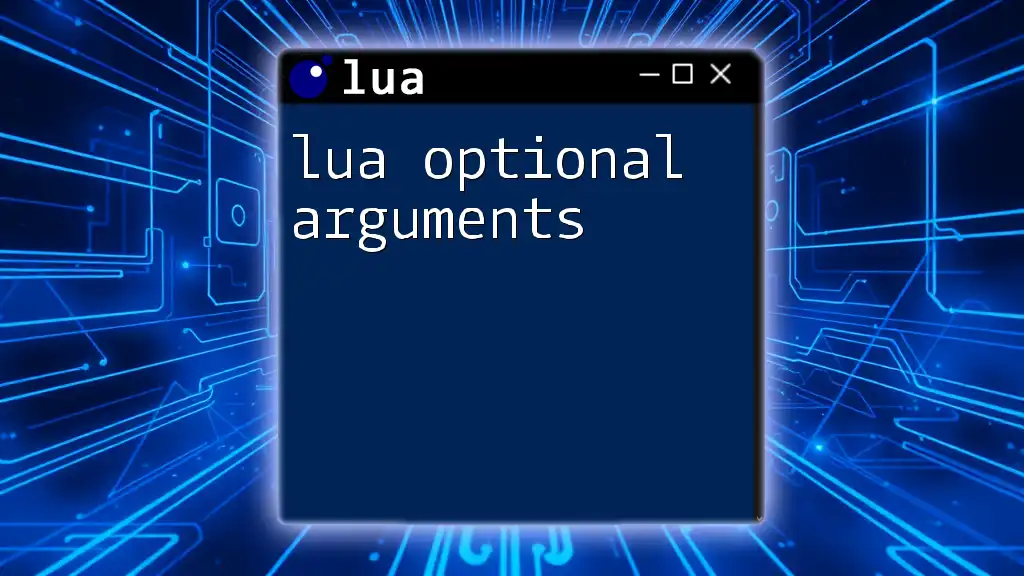
Advanced Techniques with Lua Dictionaries
Nested Dictionaries
Lua allows for the creation of nested dictionaries, providing an additional level of complexity and capability. You can create a table within another table, as shown below:
myNestedTable = { person = { name = "John", age = 30 }, location = "USA" }
In this example, `person` is a dictionary itself containing `name` and `age`, while `location` remains a single value. This creates a powerful structure to organize and relate complex data.
Using Functions as Values
In Lua, functions can also be assigned as values in a dictionary. This capability elevates the functionality of your dictionaries beyond simple data storage:
myFunctions = {}
myFunctions["greet"] = function(name) return "Hello, " .. name end
print(myFunctions["greet"]("Alice")) -- Output: Hello, Alice
This flexibility allows developers to store behavior (functions) alongside data, creating manageable and concise code.

Tips and Best Practices
Avoiding Common Mistakes
When using Lua dictionaries, it's crucial to avoid common pitfalls, like using non-string keys. Ensure that your keys are either strings or numbers to maintain consistency and functionality.
Optimizing Dictionary Access
For larger dictionaries, consider how you manage key retrieval. The direct access nature of tables makes it efficient, but using keys efficiently and minimizing data structures' sizes can enhance performance in high-demand environments.
Using Metatables with Dictionaries
Metatables in Lua introduce additional functionality, allowing you to define methods for your tables. You can apply a metatable to add behavior or make certain operations automatic:
myTable = {}
setmetatable(myTable, { __index = anotherTable })
Here, if `myTable` is lacking a key, Lua will check `anotherTable` and retrieve values from there automatically, offering a robust method for managing data access.
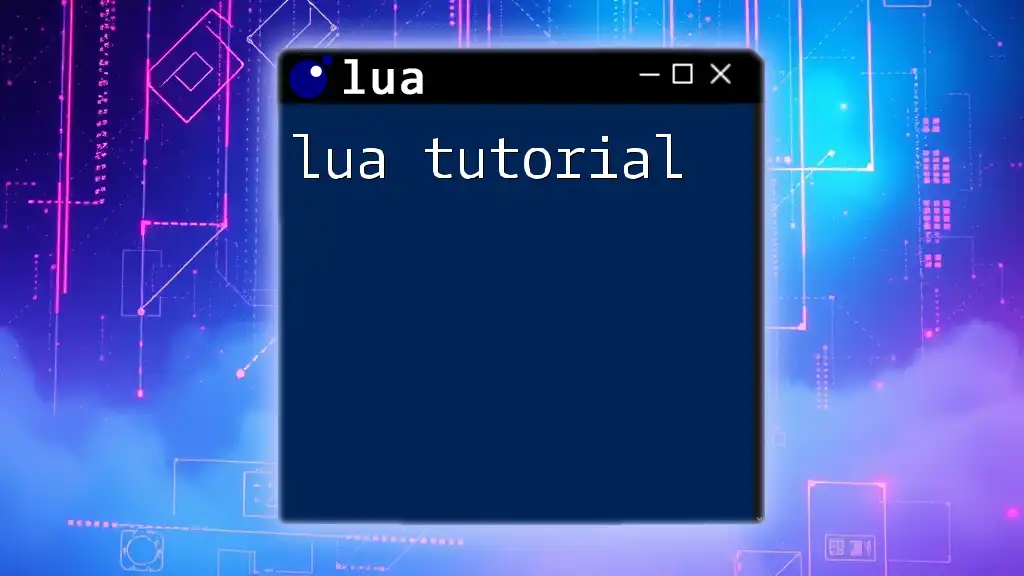
Conclusion
Understanding and utilizing a Lua dictionary effectively opens many possibilities for coding simplicity and performance. By creating, managing, and manipulating these versatile tables, you can handle a broad array of programming tasks efficiently. Your next step is to explore, experiment, and apply the concepts learned here in your Lua projects.
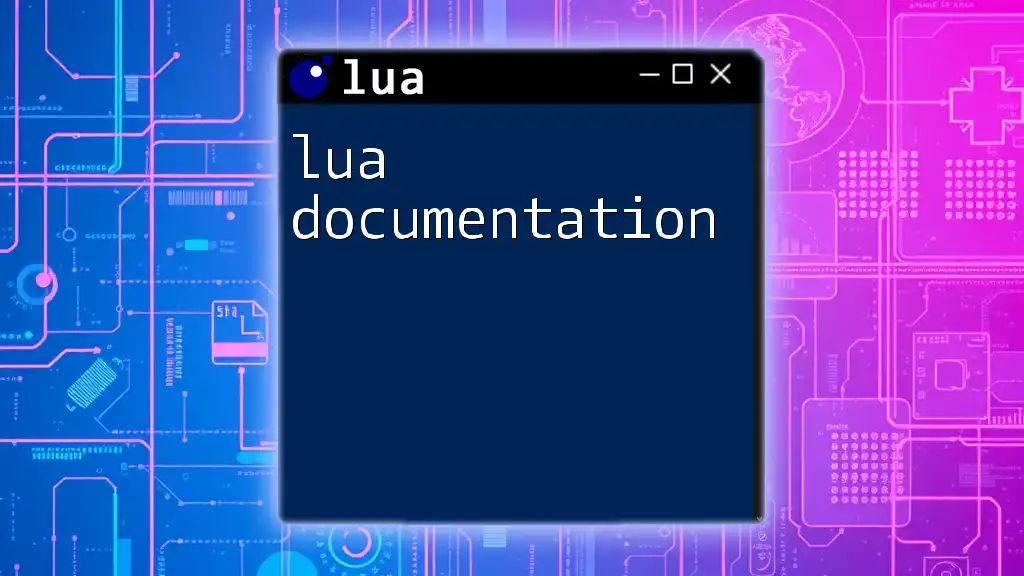
Additional Resources
To enhance your understanding of Lua and its dictionaries further, be sure to explore the official Lua documentation and consider diving into recommended programming books or online courses that focus on Lua and data structures. These resources will provide a comprehensive backdrop for your coding journey!
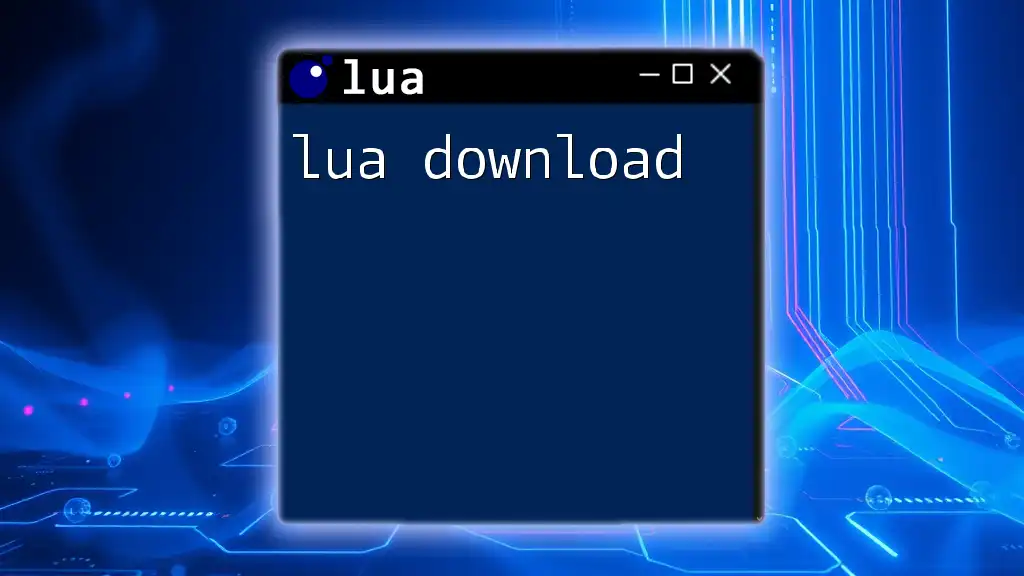
Call to Action
Now that you have a foundation in using Lua dictionaries, challenge yourself to implement them in your own projects. Feel free to share your experiences or questions in the comment section or contact form!

